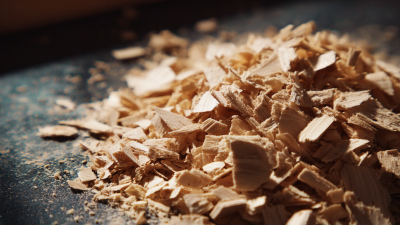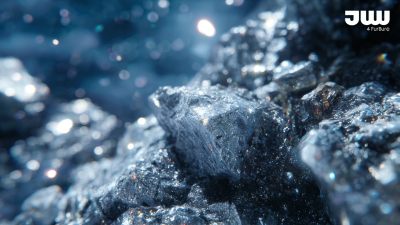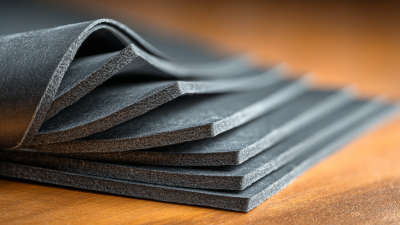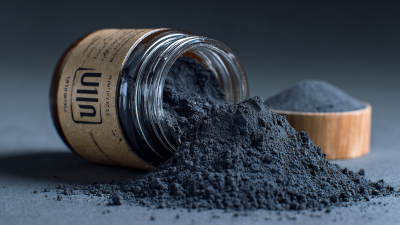Unlocking the Benefits: How Natural Flake Fuels the Future of Sustainable Packaging
The demand for sustainable packaging solutions continues to soar as environmental concerns push businesses and consumers towards more eco-friendly options. According to a recent report by Smithers Pira, the global market for sustainable packaging is projected to reach $500 billion by 2027, growing at a CAGR of 5.7%. Among the innovative materials gaining traction, Natural Flake stands out as a transformative resource that not only reduces plastic waste but also offers a renewable alternative for various packaging applications. Utilizing waste from natural sources, Natural Flake provides an opportunity to decrease the reliance on traditional petroleum-based materials, thereby contributing to a circular economy. As companies increasingly prioritize sustainability in their supply chains, understanding the benefits of Natural Flake becomes essential for those navigating the complexities of eco-friendly packaging solutions.

The Rise of Natural Flake: A Game Changer in Sustainable Packaging
The rise of natural flake as an innovative material is redefining the landscape of sustainable packaging. By leveraging its biodegradable and compostable properties, natural flake offers a compelling alternative to traditional plastics. As industries shift towards eco-friendly solutions, the adoption of natural flake reflects a growing commitment to minimizing environmental impact. This material not only reduces reliance on fossil fuels but also enhances the overall recyclability of packaging solutions, addressing a critical need in the sustainability movement.
Recently, the recognition of groundbreaking advancements in waste management showcases the potential of such materials. Award-winning initiatives emphasize the importance of integrating sustainable practices into everyday operations. The acknowledgment of advancements in polymer technology, particularly those that focus on recycling and reusing materials, further underscores the vital role of natural flake. As organizations continue to explore and implement sustainable packaging options, natural flake stands out as a game changer, paving the way for a greener future.

Understanding Natural Flake Materials and Their Environmental Impact
Natural flake materials are emerging as a revolutionary solution in the quest for sustainable packaging. These materials, derived from naturally occurring graphite, offer a favorable environmental footprint in contrast to traditional plastic alternatives. The ongoing growth of the natural graphite market, projected to reach $4.62 billion by 2032, underscores the increasing demand for sustainable options in various sectors, including packaging. The unique properties of natural flake materials make them not only biodegradable but also capable of reducing reliance on fossil fuels, thus contributing positively to the energy transition.

Tips: Consider integrating natural flake materials into your packaging solutions to enhance sustainability. These materials are not only eco-friendly but also demonstrate impressive performance compared to conventional options. Additionally, conducting a life-cycle assessment can provide insights into the environmental benefits and performance of these materials, enabling better decision-making.
The impact of natural flake graphite extends beyond packaging; it plays a crucial role in various applications, including batteries and supercapacitors. As the push for sustainable practices intensifies, understanding the characteristics of these materials will be essential. Utilizing natural flake materials does not only cater to environmental needs but also supports a circular economy by minimizing waste and enhancing product longevity.
Innovative Applications of Natural Flake in Eco-friendly Packaging Solutions
Natural flake materials are swiftly becoming game-changers in the realm of eco-friendly packaging solutions. According to a recent report by Smithers Pira, the global market for sustainable packaging is projected to reach $1 trillion by 2027, driven by consumer demand for environmentally responsible products. Natural flakes, derived from renewable resources, offer an innovative alternative to conventional plastic packaging. Their biodegradability minimizes environmental impact, aligning with the increasing regulatory pressures on single-use plastics.
Innovative applications of natural flakes extend beyond merely substituting plastic. For instance, food and beverage companies are leveraging these materials for their ability to maintain product freshness while reducing waste. A study by the Biodegradable Products Institute (BPI) indicates that products made with natural flakes can reduce waste by nearly 30% over their lifecycle compared to traditional packaging. As industries adopt these materials, they not only contribute to sustainability goals but also appeal to environmentally conscious consumers who actively seek brands that prioritize eco-friendly practices.
Unlocking the Benefits: Applications of Natural Flake in Sustainable Packaging
Comparing Natural Flake to Traditional Packaging Materials: A Sustainability Perspective
As the world increasingly prioritizes sustainability, natural flake materials are emerging as a powerful alternative to traditional packaging options. Traditional materials, often derived from petroleum, contribute significantly to environmental degradation through high carbon emissions and non-biodegradability. In contrast, natural flake offers a biodegradable and renewable solution that can drastically reduce waste in landfills and ocean pollution.
**Tips:** When considering sustainable packaging options, it's essential to evaluate the lifecycle of the material. Natural flake not only breaks down more efficiently but also requires fewer resources to produce compared to plastic. Additionally, its versatility means it can be molded into various shapes, making it suitable for a range of products without compromising quality.
The comparison between natural flake and traditional packaging also highlights significant improvements in consumer perception. As consumers become more eco-conscious, companies that adopt natural flake packaging can enhance their brand image and appeal. By opting for materials that are aligned with sustainable practices, businesses not only contribute to environmental preservation but can also tap into a growing market of environmentally aware customers.
**Tips:** When transitioning to natural flake, consider engaging your customers in the process. Educating them about the benefits and applications of natural flake can foster loyalty and promote a collective effort towards sustainability.
Future Trends: How Natural Flake is Shaping the Sustainable Packaging Industry
Natural Flake is emerging as a pivotal player in the sustainable packaging industry, thanks to its innovative materials that align with global demands for eco-friendly solutions. The edible packaging market, projected to reach $3.5 billion by 2033, is a prime example of how consumer preferences are shifting towards sustainability. This trend is driven not only by environmental concerns but also by an increasing desire for convenience, as seen in products like breakfast cereals that cater to on-the-go lifestyles. Natural Flake's incorporation into packaging solutions is enhancing the appeal of products while minimizing plastic waste.
Tips for brands looking to implement sustainable packaging strategies include prioritizing the use of natural and biodegradable materials and staying abreast of market trends in both food and beverage sectors. Additionally, considering consumer demands for innovative flavors and formats can help brands resonate more with eco-conscious consumers.
Collaborating with researchers to explore advancements in biocomposite materials can also lead to breakthroughs that address current challenges in sustainability.
As sustainability becomes an increasingly critical factor in purchasing decisions, brands that invest in natural packaging solutions like Natural Flake not only cater to consumer preferences but also contribute to a healthier planet. Embracing these emerging trends can provide a competitive edge while promoting responsible consumption and environmental stewardship.
Related Posts
-

Discover the Superior Benefits of Choosing Best Natural Flake for Your Business Needs
-

How to Select the Perfect Natural Flake for Your Manufacturing Needs
-

Exploring the Future: Advances in Graphite Thermal Film Technology by 2025
-

Ultimate Guide to Sourcing Thermal Graphite Sheets for Enhanced Thermal Management Solutions
-

7 Essential Tips for Choosing the Perfect Graphite Gasket Sheet for Your Needs
-

Future Innovations in Natural Graphite Powder: 2025 Industry Trends & Winning Global Sourcing Strategies